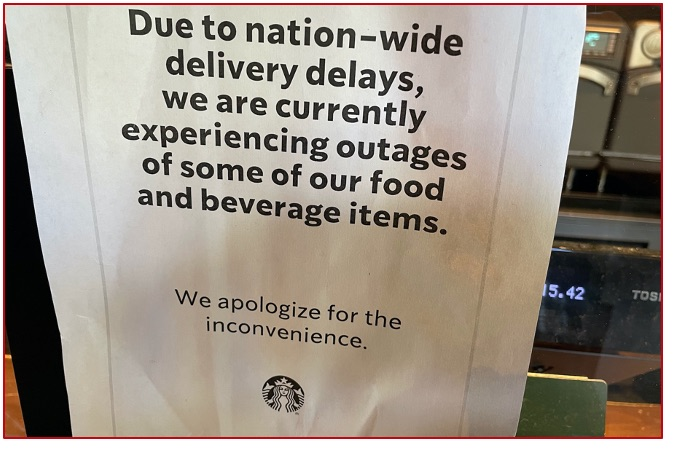
As credit professionals, most likely we are rarely thinking in terms of global supply chains. Conversely, our natural focus is on how much credit to approve and are customers adhering to our credit and payment terms.
That said, if you were trying to buy a car recently, you were probably shocked to learn that due to Corona virus related supply chain disruptions, the car you want may take several weeks, if not a few months, to be delivered. Or more simply, you’ve been floored to see how fast the cost of your groceries are going up.
Many experts estimate that over the next several months, we may see a shortage of various kinds of food and daily use items. But before we panic and start hoarding, it appears that the government and major global logistics carriers are attempting to alleviate the bottle necks by keeping ports open longer and hiring more people to work in the supply chain. That’s promising, but in the meantime, the short and medium effects of this disruption may spell quite a bit of trouble for some companies.
To understand the effects, we need to clarify what a supply chain is. In short, a supply chain is a network between a company and its suppliers to produce and distribute a specific product to the end consumer. This network includes different activities, people, entities, information, and resources. The supply chain also represents all the steps it takes to transform the product or service from its original or raw state to the final usable item.
For example, to make one Apple Computer requires several hundred suppliers. Some suppliers may provide a multitude of parts having to do with the outside shell of the computer, while others provide intricate and delicate semiconductor parts for the internal hardware. When even one part is missing in the assembly line, the final product, the computer itself, cannot be completed, shipped, and sold. In other words, it sits as work in progress until that part finally arrives.
What makes the supply chain particularly vulnerable is that over the decades, most manufacturers have transitioned their manufacturing processes to rely on a Just-in-Time inventory system. JIT is an inventory management method in which you keep as little inventory on hand as possible. That means you don’t stockpile parts and raw materials just in case you need them. Instead, you simply reorder parts and materials to replace those you’ve already sold, based on a very precise timing algorithm. For many well-known manufacturers, a great deal of resources have been spent in rationalizing supply chain management needs.
Although a JIT system greatly helps to keep inventory carrying costs down to a minimum, not having parts on hand during a significant supply chain disruption brings us to the crux of the problem. While our manufacturing customers are waiting for parts to complete the manufacturing of their products, nothing is being shipped and billed. This in turn affects their cash flow and puts a crimp on their ability to fulfill their short-term obligations. In other words, even those manufacturers who have a stellar credit history may now find themselves becoming seriously delinquent. So, although your company was able to provide its parts and services to the manufacturing client without a problem, their inability to complete the product, ship it out, and bill it may very well prevent them from paying you.
Here are a few ways to understand your major customer’s vulnerability to supply chain disruptions:
1) Confirm their back-up inventory strategy. Do they have enough inventory in stock for not only parts but also for completed products for an appropriate length of time? Or, is their JIT system set up to the extent that all inventory is ordered just prior to when it will be needed? If they are carrying enough stock to cover a disruption for at least a reasonable period of time, that will certainly be reassuring.
2) Confirm if they are using one or more vendors for the same integral part. Rather than every part coming from one supplier in China, perhaps the same part can come from other Southeast Asian companies, or even other companies in the U.S. Some companies have two or more suppliers in different areas of the world providing the same part at the same time. This is a form of supply line insurance that will keep their assembly process from shutting down.
3) Confirm their payment ability even if their operation should be on hold for a few months. Some companies carry global supply chain disruption insurance which can prove to be a very effective safety net. During this pandemic, some companies that have had this kind of insurance were able to find new suppliers and keep their operations and payments to vendors going.
I hope the above is useful in helping credit professionals to gain a broader understanding of how credit and cash flow are affected by the supply chain side of their business.
Your questions and comments are most welcome (nseiverd@cmiweb.com).
Nancy Seiverd, President, CMI Credit Mediators, Inc.

